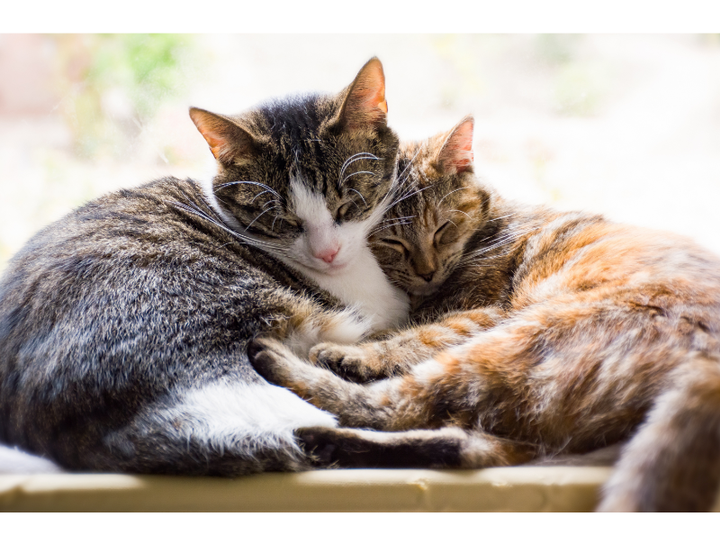Feline Focus – Our Kitty Friends are Being Left Out

Feline Focus – Our Kitty Friends are Being Left Out
Halloween has come and gone but “Scaredy Cats” are on our minds every day in the clinic. When we talk about bringing your cat to the vet, often negative and stressed emotions pop up in our minds. Most cats dislike coming to the vet, and most owners of cats almost equally dislike bringing them to the vet. This is mostly due to the real stress both owners and cats face in the experience. Unfortunately, this means that 83% of cats receive preventative medical care before one year of age, but only 50% return to see us until they have signs of illness or pain.
Many cat caregivers don’t see the value in enduring the inconvenience and stress of bringing Fearful Fluffy away from her home comforts because she seems “perfectly fine”. The sad truth is that lack of preventative care does impact our feline friends greatly. Together, we can do a better job of making the experience less stressful.
It starts at home. Cats really dislike change in their environment and routine. Changes in smell, sights, sounds, and routine upset them more than we may realize. To help with this, acclimate your cat to their carrier as a safe space. Ideal carrier traits are listed below. While there are a lot of cute backpacks and other unique varieties of transport, these may not be providing the best feeling of security for your cat. Leave the carrier out in your home as a comfort fixture and hiding place. Place it in an area where you and your cat routinely hang out. Put a favorite blanket or bed or toy inside. Put treats inside for them to discover during the day. Occasionally feed them inside the carrier to associate it as a safe place. Draping a blanket or towel over the top can help create a good “hideaway” feeling for them. Feline facial pheromones like Feliway can further promote feelings of security and safety.
Traits of an Ideal Carrier.
- Easily removable top (our exam can be performed with the cat in the carrier bottom, providing greater security). Some carriers have no removable top or require noisily removing many nuts and bolts, further exacerbating stress.
- Sturdy front gate
- Sturdy bottom (cats want to feel secure, supported, and like they are safely hiding away)
- Include familiar soft bedding on the bottom with scents from home or Feliway
- Cover the carrier with a blanket or towel to minimize scary sights and some sounds.
- Carry the carrier from the bottom and minimize swinging and jostling about.
If a cat sees their carrier as a familiar and safe place, we have eliminated a large portion of the stress in coming to see us. Often carriers are stowed away and only brought out just prior to a vet appointment. Stress starts with forcibly pushing them into a space they don’t want to go and escalates from there. You can start acclimation to an ideal carrier type now to help avoid this.
Even with acclimation to a carrier, some cats will still be very stressed with the change in environment when they come to see us. It is common for us to provide medications to ease anxiety and stress and cause mild sleepiness. These medications are extremely safe. If you have trouble getting your cat into a carrier, or they vocalize the whole time on the car ride, medications are recommended. We will often recommend them at the appointment if significant stress is visible at the visit. Once fear is established as a pattern coming to the vet, it often amplifies with each new experience. When your cat is less anxious, we can safely perform a more comprehensive exam. A comprehensive exam leads to better disease detection and less unneeded suffering for your pet.
Now we have made the experience less stressful to bring your young and seemingly healthy cat to the vet. Why do we highly recommend doing it annually (or every 6 months after age 10)? Vaccinations for rabies, distemper, and feline leukemia are of course very important (and sometimes required by law in areas for rabies). But the physical exam portion is just as, if not more important.
Why Annual Exams are Essential
- Cats age more rapidly than people. Their lifespans are shorter and disease processes can occur earlier and worsen without detection.
- Cats are masters at hiding illness and pain. By the time we visually see an issue at home it may actually be late in a disease process.
- 50% of the cats we see are overweight. Most owners are accustomed to seeing overweight cats and don’t realize there is an issue. Starting dietary intervention early is very helpful in preventing diabetes and other diseases commonly associated with obesity.
- Preventative care is better than reactive care because we detect issues early when we can do more for our patients. It also helps prevent needless suffering.
- Periodontal disease is painful and prevalent in many of our feline friends. Early detection helps prevent chronic pain and suffering.
At Countryside Animal Clinic, we are passionate about the health and wellbeing of our feline patients. We want to help you advocate for their best quality of life. Feel free to call for tips in getting your cat to their appointment with less stress. You can also visit the Cat Friendly Homes website for further helpful information. The American Association of Feline Practitioners has abundant helpful information and tools you can access here. We look forward to the day when cats and dogs can enjoy equal and less stressful access to care!
Dr. Trisha Metzger
Associate Veterinarian, Countryside Animal Clinic
Member of the American Association of Feline Practitioners
Cat Friendly Veterinarian Certified
